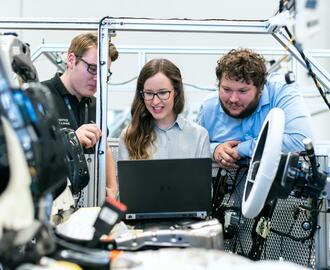What happens when manufacturing companies regularly incorporate worker feedback and ideas into their production processes? Productivity is generally higher—and so is production worker pay.
That’s a key finding from new research by Dylan Nelson, an Assistant Professor of Business Administration at the Gies College of Business at the University of Illinois Urbana-Champaign and Nathan Wilmers, the Erwin H. Schell Associate Professor of Management and an Associate Professor of Work and Organization Studies at the MIT Sloan School of Management. Wilmers is a member of the core faculty of the MIT Institute for Work and Employment Research (IWER). The paper, titled “Earnings Effects of Direct Worker Voice in Production,” was recently published online in the journal ILR Review.
In their paper, Nelson and Wilmers link data from a U.S. Census Bureau survey on management practices in U.S. manufacturers with detailed Census data on worker earnings and employment. This allows the authors to compare pay and productivity in U.S. manufacturers that vary in the extent to which they seek production worker feedback to inform decision-making. Even after controlling for factors such as workers’ education level and workplace profitability, Nelson and Wilmers discovered that companies that use production worker input more intensively paid such workers more than comparable companies that didn’t use worker input as much. Part of the reason, the researchers conclude, is that workplaces that use worker feedback more intensively tend to have higher productivity.
But the higher productivity only accounts for about one-third of the wage premium such companies pay their production workers, on average. This, according to Nelson and Wilmers, is consistent with the idea that, through their input, the workers are providing more value to the company—thus both growing the economic pie (by increasing productivity) and earning a larger slice of it.
Nelson and Wilmers raise the question of whether this prospect of higher labor costs may dissuade some companies from actively seeking worker input. But if so, managers should keep in mind that input from frontline workers comes with the potential to improve overall productivity for the firm. “Our findings would suggest…that these rising labor costs should be considered in the context of total productivity changes,” the authors conclude.


